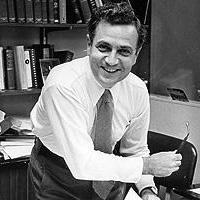"The history of a people is found in its songs."
AUTHOR: George Jellinek

MEANING OF THE QUOTE:
"Man leaves behind his history through art."









"Man leaves behind his history through art."
COMPOSER:
ANTONIN DVORAK

ROMANCE
FOR VIOLIN AND ORCHESTRA
IN F MINOR, OPUS 11

ROMANCE
FOR VIOLIN AND ORCHESTRA
IN F MINOR, OPUS 11
Ruggiero Ricci, Violin
Walter Susskind, Conductor
Saint Louis Symphony Orchestra
ROMANCE
FOR VIOLIN AND ORCHESTRA
IN F MINOR, OPUS 11
Isaac Stern, Violin
Eugene Ormandy, Conductor
Philadelphia Orchestra
ROMANCE
FOR VIOLIN AND ORCHESTRA
IN F MINOR, OPUS 11
Josef Suk, Violin
Karel Ancerl, Conductor
Czech Philharmonic Orchestra
ROMANCE
FOR VIOLIN AND ORCHESTRA
IN F MINOR, OPUS 11
Tanja Sonc, Violin
Keri-Lynn Wilson, Conductor
Slovenian Philharmonics
The concertmaster of the Prague Provisional Theatre
Orchestra, Josef Markus, commissioned from Dvorak
a solo piece he could play for his appearance at the
annual concert organized by the Czech Theatre
Orchestra and Choir Pension Association,
which was held at Prague's Zofin Palace
| The Provisional Theatre in Prague |
 |
| Zofin Palace in More Current Times |
on December 9, 1877 and
conducted by Adolf Čech.
 |
| Adolf Čech |
Dvorak took much of the music's
material for this piece from the second
movement of his earlier String Quartet in
F Minor, Op. 9, composed in 1873. That
quartet (written at a significant point in
Dvorak's life when he had fallen in
love with Anna Černáková
 |
| Anna Černáková |
whom he later married),
despite him having sweated over
the composing of it, was deemed unfit
for publication after only a single
unsuccessful performance.
STRING QUARTET NO. 5
IN F MINOR, OPUS 9 (B. 37)
https://www.youtube.com/watch?v=Uj0MAnvD6FY


It was at his publisher Simrock's suggestion
that he arrange the quartet's slow move-
ment for solo violin and small orchestra,
which the composer did in 1877, borrowing the
introductory part of the second movement to
be used as the main theme (with restatements
and variations) of the Romance and supple-
menting two new themes, one of them des-
cribed by Dvorak scholar Otakar Sourek as
Otakar Sourek
"altogether new and beautifully vocal,"
the other as
"softly insinuating … as delicate as it is charming,"
and treating them in traditional sonata form.

To also make this music a perfect
miniature piece for the home parlor,
 |
| George Henry Grenville Manton: Miss Dorothy Brook, 1918 |
Dvorak re-scored the piece, as requested
for the Pension Concert, for violin with
 |
| http://www.antonin-dvorak.cz/en/romance-for-violin-and-piano |
a version he dedicated to his friend, the
violin virtuoso Frantisek Ondricek

who, later in 1883, was to be the soloist
in the first performance of Dvorak's Violin
Concerto to which the Romance was
used as a preliminary study for.

Dvorak also composed it for violin and
orchestra but it is unclear which version
came first. When the orchestral work
was published by Simrock,

in 1879, the piano transcription
score was not the composer's but
rather an arrangement by
Dvorak's version with
piano was only published
in 1955 as part of a collected
critical edition of the composer's works.
 |
| Edmund Charles Tarbell: Girl With Violin |
The "Romance for Violin and Orchestra,"
scored for woodwind, horns, and the
usual strings, has an exceptionally
beautiful melody and its orchestral
version is also graceful and temperate,
"infused with the warm air of summer and the Bohemian woodlands."
For these qualities it has become one of
the most popular composi-
tions of its type.
The orchestral version
of the Romance is not an
arrangement of the quartet
movement but rather a free re-
working of the same ideas. Dvorak
expanded its gracious dimensions, add-
ing a generous introduction, and colored
the accompaniment with the warm tones
of winds and horns. One element that is
common to both quartet and orchestral
versions is the lovely, lyrical main theme,
accompanied by lower strings and pizzicati.
The work is built out of two
linked ideas. The first is a
song-like melody, heard high
on the violins at the outset, and
then freely elaborated by the
soloist who weaves intricate
melodic patterns around the
other orchestral players.
The second idea is again a
romantic melody, less elaborate
than the first with the soloist soaring high
above a running orchestral accompani-
ment. The middle section is much more
dramatic with virtuoso figures played by
the soloist punctuated by dramatic out-
bursts from the orchestra. It is only short
lived and the mood of tranquility is restor-
ed with the return of the first idea. The
piece moves into the tonic major when the
second idea returns and a brief
coda draws it to a close.

LINKS













